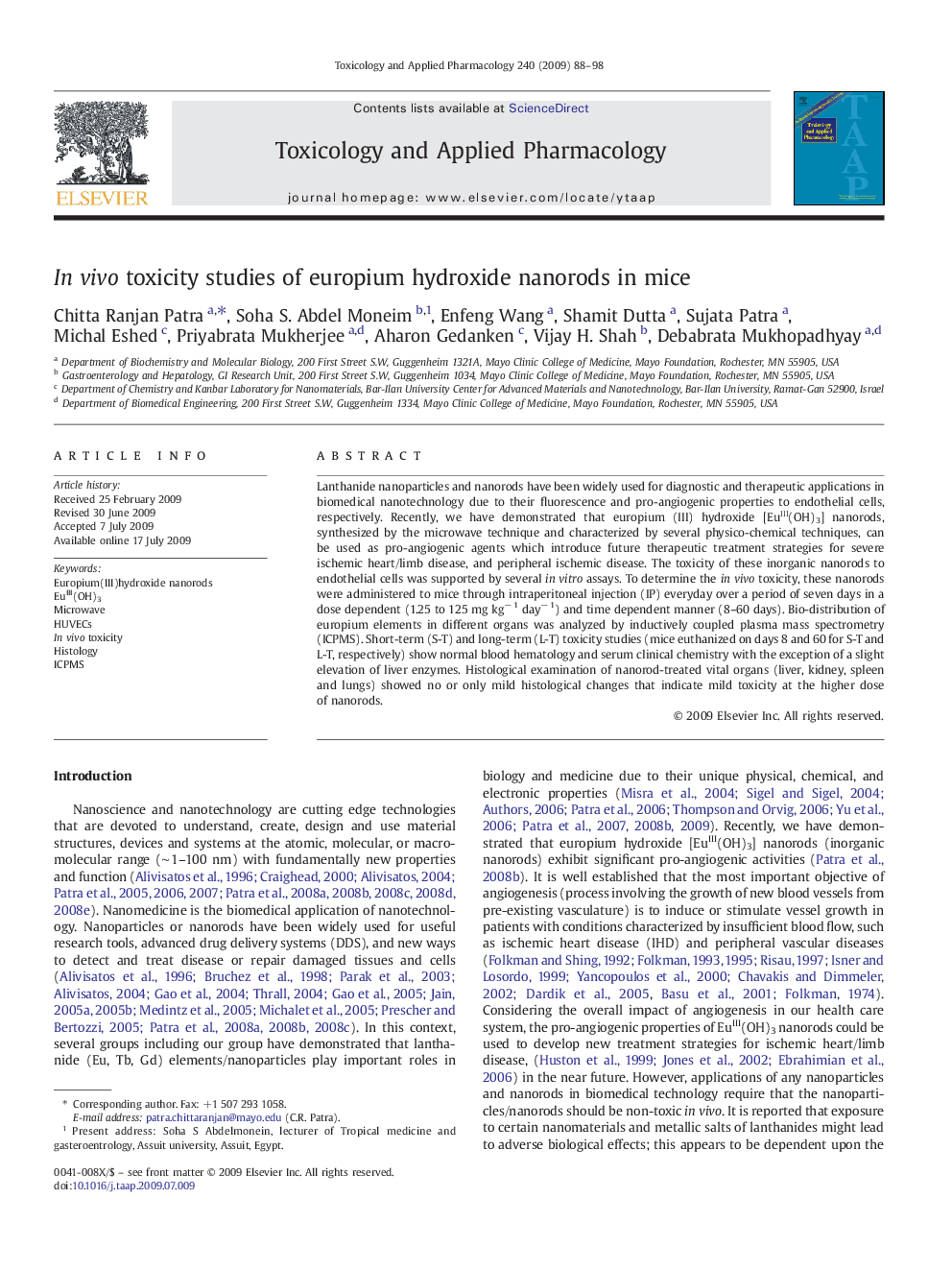| کد مقاله | کد نشریه | سال انتشار | مقاله انگلیسی | نسخه تمام متن |
|---|---|---|---|---|
| 2570384 | 1128583 | 2009 | 11 صفحه PDF | دانلود رایگان |

Lanthanide nanoparticles and nanorods have been widely used for diagnostic and therapeutic applications in biomedical nanotechnology due to their fluorescence and pro-angiogenic properties to endothelial cells, respectively. Recently, we have demonstrated that europium (III) hydroxide [EuIII(OH)3] nanorods, synthesized by the microwave technique and characterized by several physico-chemical techniques, can be used as pro-angiogenic agents which introduce future therapeutic treatment strategies for severe ischemic heart/limb disease, and peripheral ischemic disease. The toxicity of these inorganic nanorods to endothelial cells was supported by several in vitro assays. To determine the in vivo toxicity, these nanorods were administered to mice through intraperitoneal injection (IP) everyday over a period of seven days in a dose dependent (1.25 to 125 mg kg− 1 day− 1) and time dependent manner (8–60 days). Bio-distribution of europium elements in different organs was analyzed by inductively coupled plasma mass spectrometry (ICPMS). Short-term (S-T) and long-term (L-T) toxicity studies (mice euthanized on days 8 and 60 for S-T and L-T, respectively) show normal blood hematology and serum clinical chemistry with the exception of a slight elevation of liver enzymes. Histological examination of nanorod-treated vital organs (liver, kidney, spleen and lungs) showed no or only mild histological changes that indicate mild toxicity at the higher dose of nanorods.
Journal: Toxicology and Applied Pharmacology - Volume 240, Issue 1, 1 October 2009, Pages 88–98